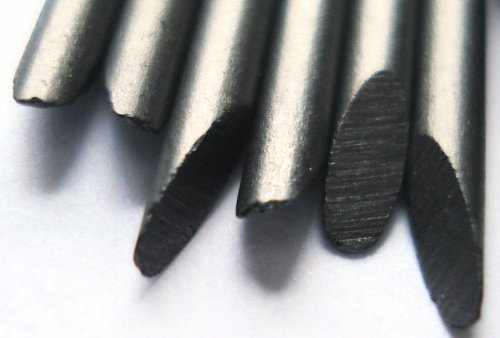
One of the oldest professional uses for graphite, compass leads are still made today.
Cylindrical segments in shape, the face of the wedge is an ellipse.
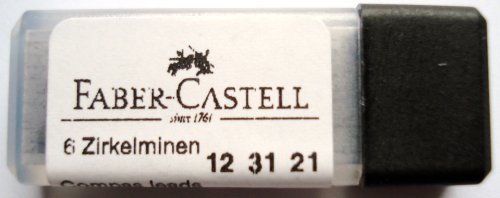

pencil talk | pencil reviews and discussion
exploring the art and science of pencils since 2005

One of the oldest professional uses for graphite, compass leads are still made today.
Cylindrical segments in shape, the face of the wedge is an ellipse.


Apart from being a multiplication table pencil from a famous manufacturer, this pencil was interesting to me as a Faber-Castell product labelled as being from Brazil.
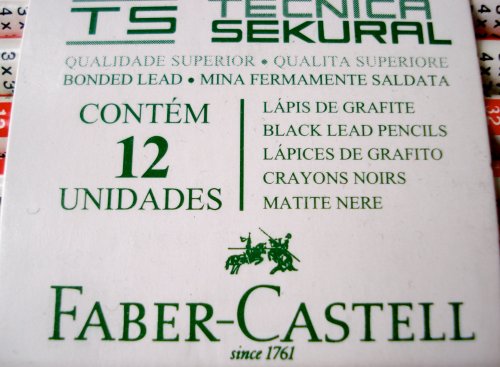

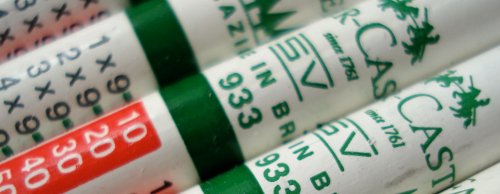
For sale via an eBay seller in Cyprus (I’ve corresponded with others who’ve purchased the same pencil set), it seems to have taken an interesting path before arriving at my door.
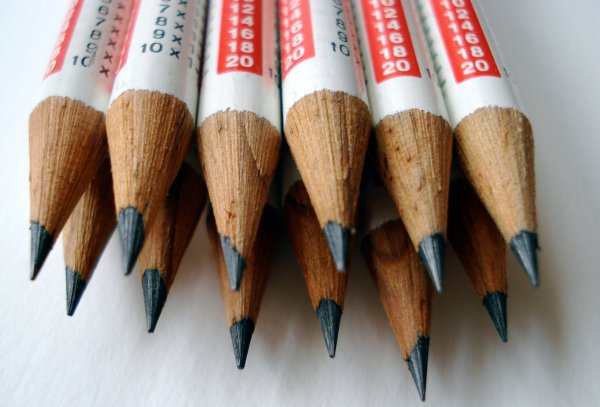
See also: Multiplication table pencils and Eberhard Faber geometry pencil.
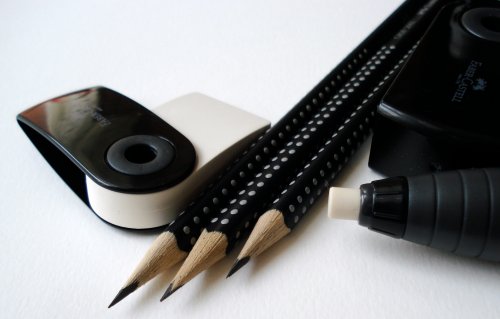
A couple of years ago, I found some Grip 2001 pencils in red and blue finishes. There were two comments about a black version also existing. I guess the black version is even more unusual, as I’d not even seen it online, let alone in person. That recently changed, as I saw a package of these pencils with some accessories offered by an eBay seller.
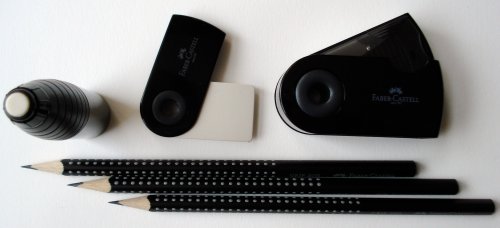
The accessories are themselves interesting – a container sharpener, a sleeved eraser, and an eraser/sharpener combination. They look like they would make a great inexpensive gift for a young person.
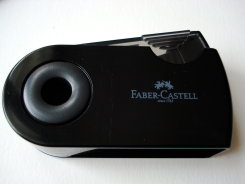
|
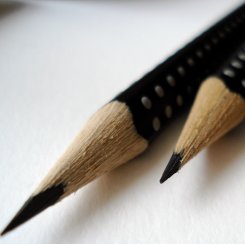
|
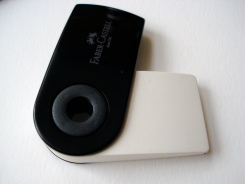
|
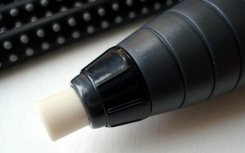
|
Beautiful and simple stationery items. Alas, just one problem – none of the the sharpener blades can be replaced, the sleeve eraser can’t be refilled, and the eraser core in the combination sharpener/eraser has no refill for sale that I’m aware of. These accessories seem too nice to be disposable.
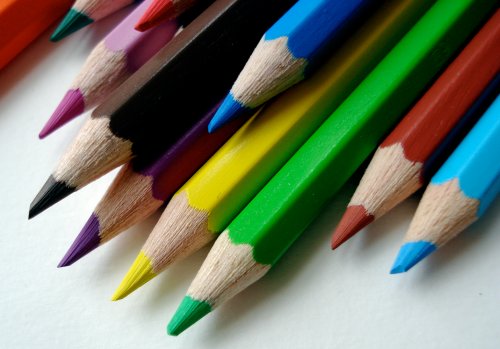
Though erasable colour pencils may not be new, they remain a small specialty pencil category.
This situation might soon change, as Faber-Castell has introduced a new product in this category.
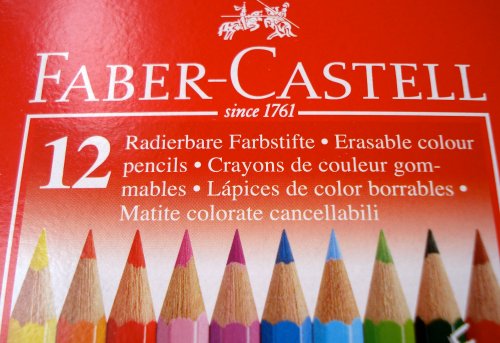
Aimed at children, it is a set of twelve pencils, each with the lead colour matching the pencil finish and eraser.
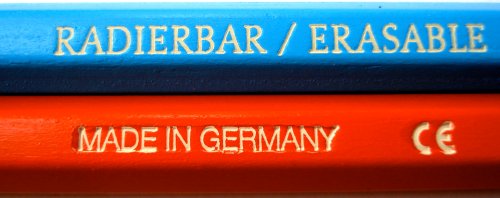
The pencils have no model number, and are marked “Radierbar/Erasable”. As well as a space to write one’s name, they notably state “Made in Germany”. I don’t think I’ve ever seen this full statement on the body of a Faber-Castell pencil.
The box indicates some possible student uses, such as learning algebra or a foreign language, as well as drawing. The potential for erasable colour marks appears promising in the educational realm.
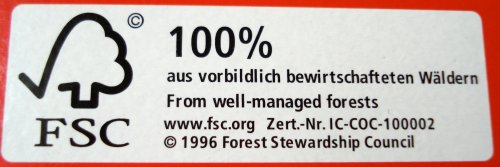
The box as well mentions FSC certification. I looked up the certificate (IC-COC-100002), and it unfortunately appears to be generic to Faber-Castell, with no interesting information about the species of wood, or even the part of the world it came from.
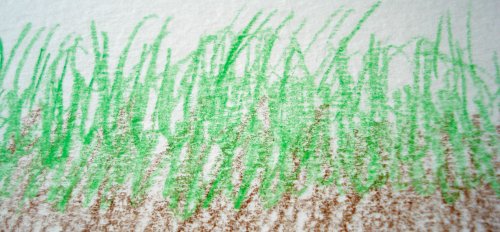
So how do they function? The colours seem bright, but somewhat on the pastel side. I like them.
As to the pencil’s core claim – erasure – the marks seemed to hardly erase at all with the attached erasers! This was quite disappointing, given that erasability is supposed to be the set’s main feature. Yet I’ll admit to not being surprised – this seems like an almost impossible feature to offer in a low cost children’s product.
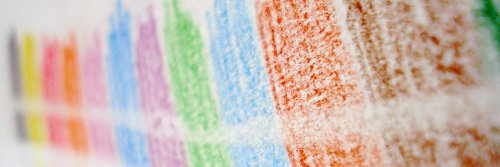
With a Tombow Mono block eraser, results were much better, though some colours erase better than others.
I also compared them to colour pencils that don’t claim erasability – and these are definitely much better. So with a good block eraser (not the attached eraser), and reasonable expectations (much, but not complete erasure), they may be a fun item to try.
And a bonus – inexplicably, the “black” pencil isn’t a black colour pencil, but rather a graphite pencil.
My thanks to Gunther from Lexikaliker for sending me these pencils.
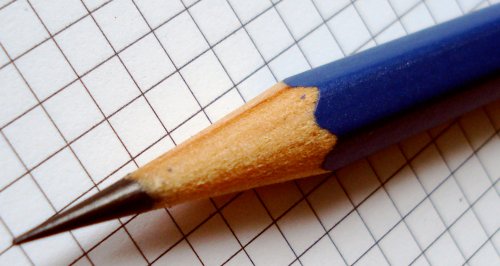
Faber-Castell’s Brazilian operation makes 1.8 billion pencils a year! It is a true wonder that more don’t wash up overseas. Well perhaps they do – but their origins aren’t mentioned.
So here is an exception – the Presto 1210 is clearly stamped “Ind. Brasil” and sold in a package marked “Origen: Brasil”. The samples I have were purchased in Argentina, and I would like to thank blog reader dasmarians for kindly sending them to me.

The pencil is factory sharpened, blue finish with ferrule and eraser (pink or white). It has stamped imprints, silver imprints, and white imprints.
The obverse reads:
2847 Ind. Brasil Eco {logo} Faber-Castell 2=HB
The reverse:
Madeira Reflorestada/Madera Reforestada 1210 Presto 7 891360 548294 {bar code}
Of the many “pencils of the world” I’ve tried, many have interesting stories, names and finishes, but few are truly great writers. I will state that the Presto 1210 is an exception.
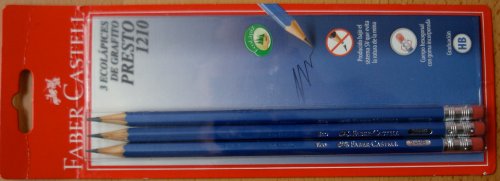
The lead is admirably rich, dark, and smooth. From the appearance of the pencil and the packaging, this is just an ordinary school or office pencil. I was comparing it with the 2B Grip 2001 (many of which are also made by Faber-Castell in Brazil), and it seems subjectively superior.
The “Eco” name, and statements of FSC certification, are attestations to the forestry management processes behind the wood – probably a practical requirement for pencils made in rainforest areas. I’m curious about what species of wood might be in the pencil. A pine variety?
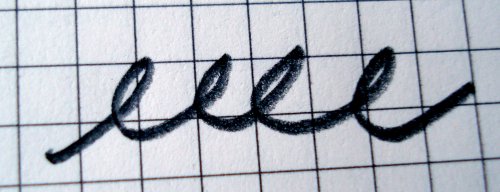
I wish I could find other pencils from Faber-Castell Brazil – they’ve done a great job with the Presto.
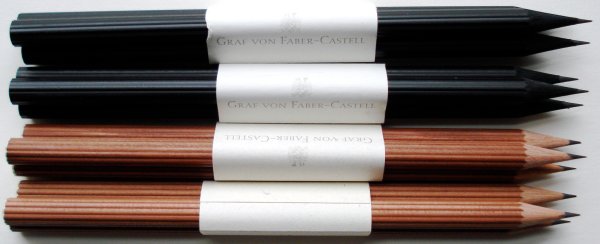
The Guilloche version is not the only recent Graf von Faber-Castell pencil variant.
Also for sale in some markets is the original version, but without the silver plated cap.
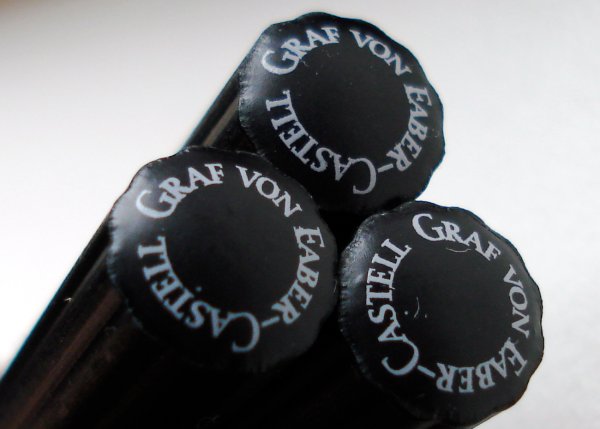
I’d hesitate to call it a “discount” Graf von Faber-Castell pencil – but perhaps that wording is correct.
PenciLog (in Korea) first displayed this pencil online – perhaps a year ago? A few recently washed ashore in Canada, thanks to an erudite and scholarly reader in the US.
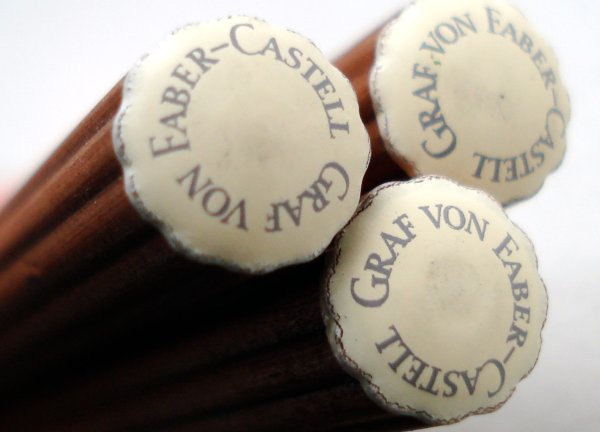
Sold in paper banded sets of three, I’m not sure if this pencil belongs in the product line.
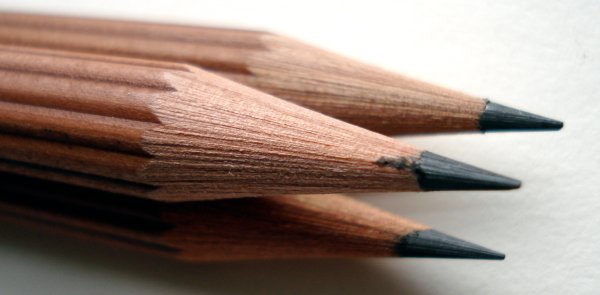
See also:
Pencil Boxes (II) – Graf von Faber-Castell (pencil talk – February, 2008)
Graf von Faber-Castell pencils. (pencil talk – July, 2006)